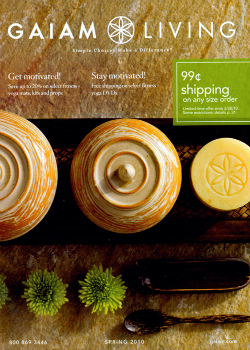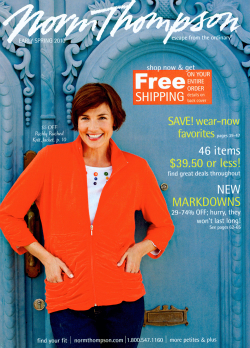
As this column has reflected before, the mini-gap between catalog copy and conventional direct response copy has been shrinking.
No surprise, since copy in printed versions of catalogs that don’t use print as a shill for the Web version has picked up some of the standard online selling tools.
(A quick explanation, for those who produce side-by-side print and Web catalogs, neither intended to cannibalize the other: Some print catalogs deliberately put themselves into a secondary position, suggesting a Web visit for more comprehensive — or more salesworthy — details.)
Defining the Web differential
We don’t need a historian to point out how the Internet has changed — some say “infected” — all other media.
Aside from being implicitly price-oriented, Web copy is geared to immediacy. That factor is why “free shipping” has become such a major factor in online marketing.
A traditionally sedate catalog has three copy options: continue in its established course — assuming, sometimes correctly, that not yielding to Web influence adds cachet; maintain its dignity, using descriptions and word-strength to refer Web-converts to that upstart medium; or adapt copy to match Internet copy.
Logic pertains to all three possibilities. But in a brutally competitive business environment, logic may have to yield to rivalry.
A catalog of home goods includes “Hawaiian Volcano Plants.” Immediately below this heading, in red, is “Free rush delivery upgrade.” In pre-Internet days, would the creative team have considered such a subhead, combining “free” with fast delivery? That single line is the only reference, obviously inserted after the copy was complete.
(The first line of text, which follows immediately, is so bland it’s generic: “Native volcanic cinders create an ideal natural habitat for these fascinating tropical plants.”)

Free or low-cost shipping, a staple on the Web, has become a major player for printed catalogs. Here are a few references on catalog covers: “Free shipping when you spend $50 or more” … “Order by and pay only $4.95 shipping on any order” … “Free shipping on your entire order. Details on back cover.”
The back cover of that last one explains that free shipping applies to orders of $49 or more. This company’s Web home page has a different thrust — new products, an offer of a three-month subscription to any three of an extensive list of magazines, and new product. A search for free shipping discloses a standard list of shipping prices, from $5.99 to $19.99. No freebie here.
The conclusion is either that this was a reverse-test or that the catalog sat on my desk after the Web offer had changed — although I checked the comparison well before the stated deadline. “Dream Jeans,” on page three of the printed catalog, had a superb visual and descriptive treatment; the same item, in the online catalog, had pedestrian photos and copy, plus quick-click references to semi-parallel products.
“They’ll stay with you if …”
Any conversation between two noncompeting catalogers who aren’t viciously competitive with each other has to include an off-the-cuff analysis of comparative attitude — the recipient of a printed catalog matched with an aggressive search into the online version of that same catalog.
One comment, by a cataloger who says she isn’t locked into free shipping as a major sales weapon except during “specific time-related campaigns,” may define the 2010 evolutionary attitude: “We don’t have to spill every key point on the Web home page or the splash page. They’ll stay with you if you give them an incentive or a teaser.”
Incentive or teaser. In print, that has to be the cover. Online, it’s whatever tells the hand holding the mouse, “Go this way, not that way.”
Herschell Gordon Lewis is the principal of Lewis Enterprises (www.herschellgordonlewis.com) in Pompano Beach, FL.